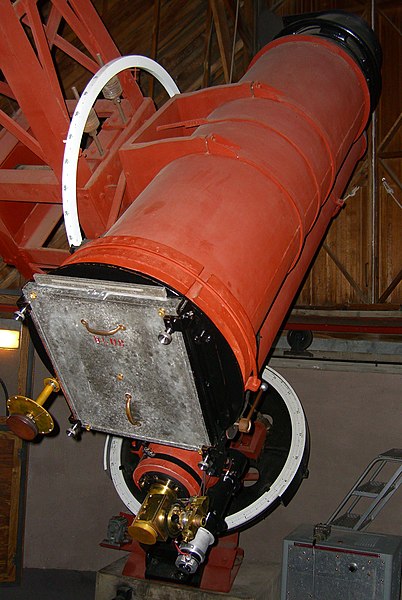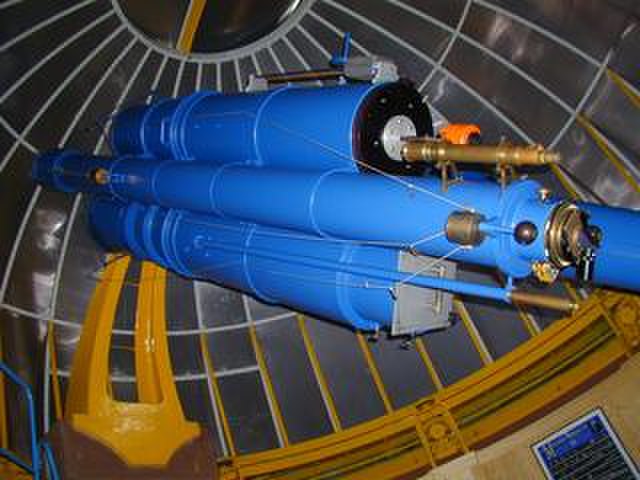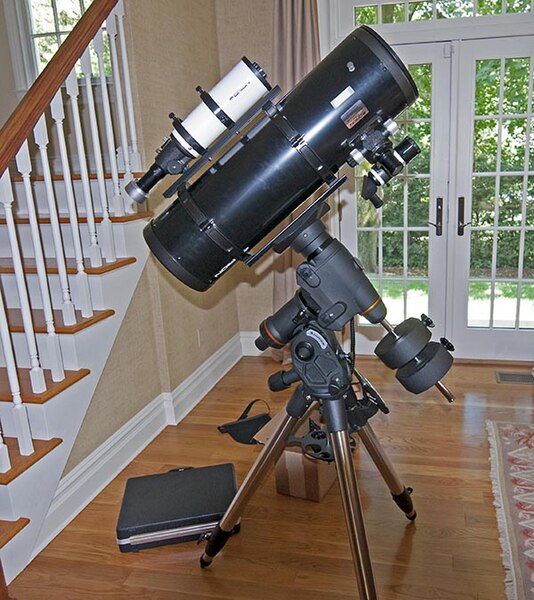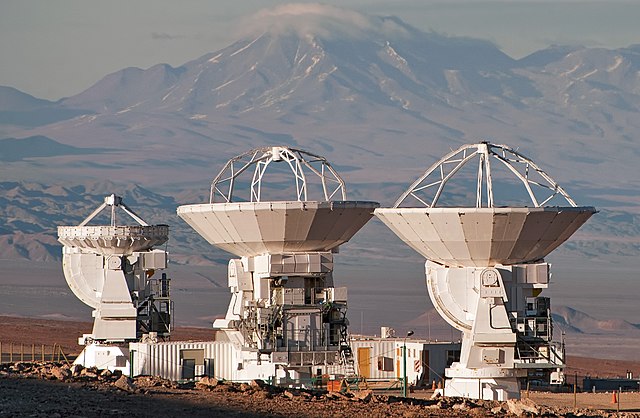An astrograph is a telescope designed for the sole purpose of astrophotography. Astrographs are mostly used in wide-field astronomical surveys of the sky and for detection of objects such as asteroids, meteors, and comets.
A 13-inch (330 mm), f/5.3 astrograph at Lowell Observatory (a refractor with a 3 element Cooke triplet lens) used in the discovery of Pluto.
A double astrograph consisting of two 6-inch (150 mm) astrographs and a central guide scope on display at Landessternwarte Heidelberg-Königstuhl observatory.
The Bruce double astrograph at the Landessternwarte Heidelberg-Königstuhl observatory.
This is a modern amateur Newtonian astrograph, specifically designed for astrophotography.
A telescope is a device used to observe distant objects by their emission, absorption, or reflection of electromagnetic radiation. Originally it was an optical instrument using lenses, curved mirrors, or a combination of both to observe distant objects – an optical telescope. Nowadays, the word "telescope" is defined as a wide range of instruments capable of detecting different regions of the electromagnetic spectrum, and in some cases other types of detectors.
The 100-inch (2.54 m) Hooker reflecting telescope at Mount Wilson Observatory near Los Angeles, USA, used by Edwin Hubble to measure galaxy redshifts and discover the general expansion of the universe.
17th- century telescope
Three radio telescopes belonging to the Atacama Large Millimeter Array
Hitomi telescope's X-ray focusing mirror, consisting of over two hundred concentric aluminium shells








